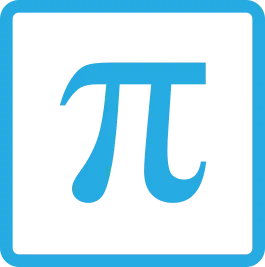Kids and parents often ask, “Why is this question in here twice?” It happens often in Milestone Maths and it is totally intentional.
There are two reasons why I repeat the “same question,” and, no, it has nothing to do with me working too late!
Reason 1: Some kids need it that way
The first reason is that they are, technically NOT the same question. For example:
2 + 5 = ____
is not technically the same as:
5 + 2 = ____
even though most people who have even a tiny bit of maths sense (including kids past level B in Milestone Maths) realise that they have the same answer and are virtually the same.
But, there are some people who don’t. Especially some of my friends on “the spectrum.” For those, I need to make sure that they see each sum both ways. Eventually, if they see these problems often enough, they will understand that they really are (almost) the same.
Some other friends will need to see a concept many, many, many (did you hear me say, “many?”) times over before they understand it. Seeing problems repeated in short succession at first can give a boost to the process.
So, if you are working on the first page of a Milestone Maths lesson and you don’t fit in either of the above categories and you spot a repeated problem, you have my permission to skip it. But, I hope you did notice that I said, “if you are working on the first page of the lesson.” Why? Keep reading.
Reason 2: We’re building memories that stick for life!
The second reason you see repeated problems in Milestone Maths applies mostly to drills and the Review and Practice pages. To put it simply, “practice makes permanent.” The basic facts of maths (addition tables and multiplication tables) simply must be memorised if the rest of maths is ever going to truly click. To make memories deep and permanent, repetition is key.
The good news is that these two dreaded tables are the ONLY things that you need to memorise in maths. Everything else flows pretty logically from one step to the next. Think of it like learning to read. Learning to recognise the letters of the alphabet (especially those darned look-alikes – think “b” and “d”) and then the myriad, often confusing, spellings of English sounds can be a hard slog. But once that’s done, a world of adventure awaits.
In maths, once you’ve learned the basic tables, the rest is one big logic puzzle. If taught properly, maths can be as fun and effortless as an easy Sudoku puzzle. Just like mastering “b” and “d” unlocks books, nailing 2 + 5 and 2 x 5 (with their cousins 5 + 2 and 5 x 2) opens up greater mathematical mysteries. Discovery and mathematical adventure awaits!
So, while the drills might be a bit of a bother at first, if you stick with them, you’ll see their value in the long run and eventually thank me for them. Trust me. Countless minions have gone before and done just that!
Rusty on your tables? Grab a supplementary drill book in the products section or see “Not Negotiable” for fun alternatives.

